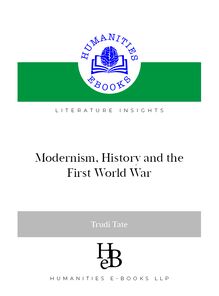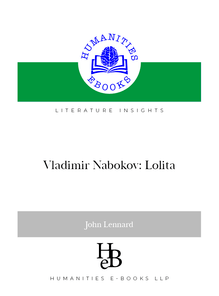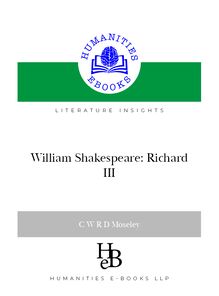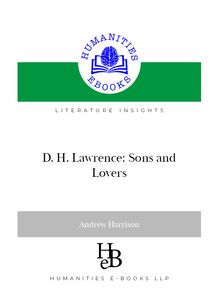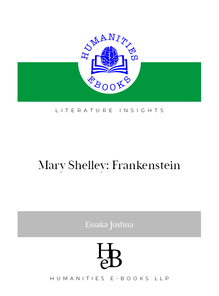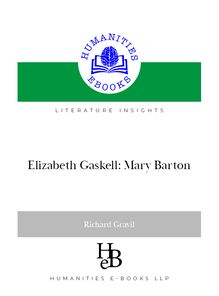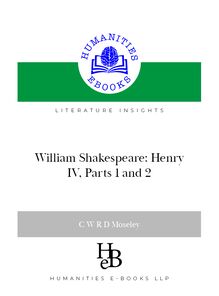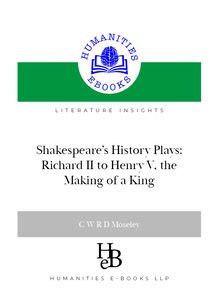-
 Univers
Univers
-
 Ebooks
Ebooks
-
 Livres audio
Livres audio
-
 Presse
Presse
-
 Podcasts
Podcasts
-
 BD
BD
-
 Documents
Documents
-
- Cours
- Révisions
- Ressources pédagogiques
- Sciences de l’éducation
- Manuels scolaires
- Langues
- Travaux de classe
- Annales de BEP
- Etudes supérieures
- Maternelle et primaire
- Fiches de lecture
- Orientation scolaire
- Méthodologie
- Corrigés de devoir
- Annales d’examens et concours
- Annales du bac
- Annales du brevet
- Rapports de stage
La lecture à portée de main
90 pages
English
Découvre YouScribe en t'inscrivant gratuitement
Je m'inscrisFields of Agony: British Poetry of the First World War , livre ebook
Découvre YouScribe en t'inscrivant gratuitement
Je m'inscris
Obtenez un accès à la bibliothèque pour le consulter en ligne
En savoir plus
En savoir plus
90 pages
English
Obtenez un accès à la bibliothèque pour le consulter en ligne
En savoir plus
En savoir plus

Description
An illustrated study of poetry written by men and women in all parts of the British Isles during the First World War, 1914 - 18.
Sujets
Informations
| Publié par | Humanities eBooks |
| Date de parution | 11 janvier 2021 |
| Nombre de lectures | 0 |
| EAN13 | 9781847600271 |
| Langue | English |
| Poids de l'ouvrage | 1 Mo |
Informations légales : prix de location à la page 0,0250€. Cette information est donnée uniquement à titre indicatif conformément à la législation en vigueur.
Extrait
Running Head 1 Fields of Agony British Poetry of the First World War
Stuart Sillars
puBLicatiOndata
© Stuart Sillars, 2007
The Author has asserted his right to be identiIed as the author of this Work in accordance with the Copyright, Designs and Patents Act 1988.
Published byHumanities-Ebooks.co.uk Tirril Hall, Tirril, Penrith CA10 2JE
ReadingOptiOns
*To use the navigation tools, the search facility, and other features of the toolbar, this Ebook should be read in default view. *To navigate through the contents use the hyperlinked ‘Bookmarks’ at the left of the screen. *To search, expand the search column at the right of the screen or click on the binocular symbol in the toolbar. *For ease of reading, use <CTRL+L> to enlarge the page to full screen *Use <Esc> to return to the full menu. *Hyperlinks appear in Blue Underlined Text. To return from an internal hyperlink use the ‘previous view’ button (more than once if need be). *For a computer generated reading use <View>Read out loud>
LicenceandpeRmissiOns
Purchasing this book licenses you to read this work on-screen and to print one copy for your own use. Copy and paste functions are disabled. No part of this publication may be otherwise reproduced or transmitted or distributed without the prior written permission of both the copyright owner and the pub-lisher. Making or distributing copies of this book constitutes copyright infringe-ment and would be liable to prosecution. Thank you for respecting the rights of the author.
isBn 978-1-84760-027-1
Fields of Agony:British Poetry of the First World War
Stuart Sillars
Bibliographical Entry:
Sillas, Stuart.Fields of Agony: British Poetry of the First World War. Literature Insights. Tirril: Humanities-Ebooks, 2007
A Note on the Author
Stuart Sillars is Professor of English at the University of Bergen, Norway.
He has written extensively on the literature and visual art of the twentieth cen-tury: his books includeArt and Survival in First World War Britain(Macmillan, 1987),British Romantic Art and the First World War(Macmillan, 1991) and Structure and Dissolution in English Writing, 1910–1920(Macmillan, 1999). He has been a visiting professor in Texas, Washington, Zagreb and New Delhi. His most recent book isPainting Shakespeare: The Artist as Critic, 1720–1820(Cambridge University Press, 2006). ISBN xxxxxxxxx
Contents
A Note on the Author List of Illustrations Chapter 1:hattheepet�:henatureoarpoetr 1.1 The Invention of War Poetry 2.2 The Place of Poetry in 1914 2.3 Issues of Gender 2.4 Thomas Hardy (1840–1928): ‘Men who March Away’ 1.5 Conclusion 1.6 A Note on Texts Chapter 2: o battle or the truth: Popular Poetr 2.1 Deîning ‘Popular’ 2.2 Responses to war in popular art forms 2.3 Ideal, Order and Consolation 2.4 Structure, idea and ideology in popular poetry 2.5 Anthologies 2.6 Other voices Chapter 3: Nobo aske hat the omen thought: Poetr b omen 3.1 Approaching War Poetry by Women 3.2 The Variety of Poetry by Women Chapter 4: Young bloo an hgh bloo: Canonal rters 4.1 Displaced nature: Graves, Blunden and Gurney 4.2 Siegfried Sassoon (1886–1967) 4.3 Wilfred Owen (1893–1918) 4.4 Edward Thomas (1878–1917) 4.5 Other cultures, other nations 4.5.2 David Jones (1895–1974) 4.5.3 Irish poetry 4.5.4. Scottish poetry Chapter 5: Plang ar Poetr 5.1 War poetry and Modernism 5.2 Last thoughts Bblograph
Lst o Illustratons
Cover
21
21
22
23
24
25
30
40
48
50
83
Deniécourt Wood at Sunset.The Somme, Volume 1. Illustrated Michelin Guides to the Battle-Fields (1914–1918). (Clermont-Ferrand: Michelin, 1919)
F. H. Townsend.‘Bravo, Belgium!’Mr. Punch’s History of the Great War(London: Cassell, 1919). First published inPunch, 1914.
Louis Raemakers.‘This is how I deal with small fry’.HistoryRaemakers’ Cartoon of the War, Vol. I, compiled by J. Murray Allison (New York: Century, 1918).
L. Raven Hill.‘Fair Ypres’.The Queen’s Gift Book (London: Hodder and Stoughton, 1915).
Eugène Hastain.‘Victory day’.The Queen’s Gift Book.
L. Raven Hill.‘After one year’Mr. Punch’s History of the Great War. First published inPunch, 1915.
Front cover.Collected Poems of Rupert Brooke. (London: Sidgwick and Jackson, 1918).
John McCrae. ‘In Flanders Fields’,Punch8 December 1915.
Sebastian E. Scott. British Troops leaving for the Front. FromThe War 1915 for Boys and Girls, by Elizabeth O’Neill, M. A. London: T. C. and E. C. Jack, 1915
Women munition workers, with original caption, fromThe War Illustrated, 1915
Thiepval Wood.The Somme, Volume 1. Illustrated Michelin Guides to the Battle-Fields (1914-1918). (Clermont-Ferrand: Michelin, 1919)
Ploegsteert Wood.Twenty Years After. The battleîelds of 1914-18: Then and Now. Edited by Ernest Dunlop Swinton. (London: George Newnes, 1938)
Chapter 1
hat the epet�: he nature o ar poetr
What did they expect of our toil and extreme Hunger – the perfect drawing of a heart’s dream?
—Ivor Gurney: ‘War Books’
1.1 he Inventon o ar Poetr
‘War poetry’ is commonly read, discussed and taught as a very speciîc genre. The term is used to refer almost exclusively to poetry from the First World War (1914– 18), and within that to a very limited group of poets, among whom Wilfred Owen and Siegfried Sassoon are the most prominent. But poetry about war has been in exist-ence for a very long time. Homer’sIliadhas strong claims to be called a war poem, and literature in English frequently discusses the theme of war. Sir Philip Sidney’s 1 love sonnets often use images of war to describe the strife of love; Wordsworth’s ‘Salisbury Plain’ poems discuss the after-effects of war in terms of injury and wid-owhood; Tennyson’s ‘Charge of the Light Brigade’ either celebrates or condemns the loss of life in one moment of the Crimean war; and several writers during the South African wars of the turn of the nineteenth and twentieth centuries address a complex of issues of patriotism, heroism and suffering. Why, then, has the poetry of the First World War come to assume its place in the academic tradition? The answer to this question has a great deal to do with the larger processes in which the literary canon is created, and history written. Both involve a dialogue between the present and the past, in which each generation tries to explain and under-stand the decisions of its predecessors. If we return to the years of the war themselves and explore the kinds of poetry being published, we would înd that hardly any of the poems now familiar were popular, or in many cases were even published. The best-selling anthologyThe Muse in Arms, edited by E. B. Osborn, appeared in 1917
The sonnet form is discussed online athttp://www.writing.upenn.edu/~aIlreis/88/sonnet.html.
Fields of Agony 8
and included nothing by Wilfred Owen and only two poems by Sassoon. Much of its content was of poetry that celebrated the war in styles from the openly jingoistic to the sadly accepting of death in battle as the price of a cause worth defending. A vast amount of other poetry was published during the war years, in national and local newspapers, magazines of every kind, presentation volumes sold in aid of war chari-ties, and books published privately as memorials to the sons of wealthy families. The great majority of this, it must be said, represented what was the prevailing view of the war – that its destruction and waste of life was appalling, but that no individual action should be undertaken or voice raised in the effort to bring it to an end. Although some poets, notably Siegfried Sassoon, used their poetry to convey out-rage at the continued prosecution of a war they felt could never be won, it was not until the late 1920s that a ood of books revealing the horror of the war began to appear. In England, among the most inuential were Edmund Blunden’sUndertones of War, a prose memoir which included a collection of poems; Richard Aldington’s sear-ingly ironic novelDeath of a Hero; Robert Graves’sGoodbye to All That, a memoir that moved from experiences in public school to the disillusionment of the trenches. These were matched in France byLe Feu (Under Fire) by Henri Barbusse and in Germany byIm Westen nichts neues(All Quiet on the Western Front) by Erich Maria Remarque. Within this setting, Edmund Blunden produced his edition of the poems of Wilfred Owen, published with a memoir in 1931. Among those who were strongly inuenced by it was the young W. H. Auden, whose early sonnets strongly resemble Owen’s writing, showing his work as a genu-ine contribution to the dialogue of poetic change. In a socio-political dimension, it contributed to the general mood of paciîsm that facilitated the appeasement of Hitler in the 1930s, helping to build the overwhelming feeling in Britain that there must be ‘no more war’. The popular image of Owen the soldier-poet, sacriîcing his life to defend his troops and his country, killed only a week before the Armistice in 1918 and, like thousands of others, betrayed by the idiocy of the military commanders, was a powerful symbol of everything that must never, ever, be repeated. Later historians have questioned this view, stressing the strategic value of the leadership of Haig and others, but it still has a large claim for many. It was in the 1960s that ‘war poetry’ began to attain prominencein the educational system in Great Britain. The îftieth anniversary of the outbreak of war was marked in 1964 by the recently-created BBC2 television channel with a 26-part documentary history series calledThe Great Warcombined original newsreel îlm from which the war years with recollections spoken by men and women who had lived through
Fields of Agony
them. Its stress on the sufferings of war and its military blunders acquired increasing resonance with the mounting protest against American actions in Vietnam: in the face of this and the prevailing concerns of the 1960s with political and social freedom, and radical departures in schools and universities, the poetry of the war became a signiîcant focus for contemporary values. Since then, concerns with the social and political functions of literary texts in theoretical movements such as Marxism, New Historicism and varieties of Feminism and Gender Studies have all sharpened and redirected the attention that the poetry of the First World War has attracted. These features of its reception history do not in any way invalidate the poems of the First World War as entities in themselves; but they have led to the privileg-ing of a speciîc kind of text within the larger outpouring of poetry during the war years. Popular poetry, poetry that actively or with regret advocates the continuance of the war, and poems by women have until very recently been largely overlooked. The result is a view of the poetry of the war years that is highly selective, limited in breadth and in the understanding it offers even of those poems on which it concen-trates, by a rejection of the larger conventions and assumptions that they directly contested. Within this book it is not possible to present a comprehensive survey of the poetry of the First World War. Its aim instead is to offer an introductory account of some of its main directions and concerns, to place the work of the major îgures within the larger frame of popular writing and the concerns that it reveals, and thus strengthen awareness of the poems themselves and, at the same time, of the ‘îelds of agony’ from which they were written.
1Plae o Poetr n 1914.2 he
While the distinction between popular and élite cultural forms was distinctly present in 1914, it did not have quite the same form as that which it has come to adopt nearly a century later. Whereas many present-day critics and cultural institutions, for exam-ple broadcasting and university decision-makers, reject many artistic forms as elit-ist, in the early twentieth century there was demonstrably a genuine desire among people of all social backgrounds to acquire greater knowledge of what have since become minority, ‘high culture’ works of literature, music and visual art. This was a result largely of the Victorian ideal of self-improvement, which saw knowledge of the arts as a social and a moral imperative. The Education Act of 1870 made primary education available to all, making literacy almost universal; advances in printing and
-
 Univers
Univers
-
 Ebooks
Ebooks
-
 Livres audio
Livres audio
-
 Presse
Presse
-
 Podcasts
Podcasts
-
 BD
BD
-
 Documents
Documents
-
Jeunesse
-
Littérature
-
Ressources professionnelles
-
Santé et bien-être
-
Savoirs
-
Education
-
Loisirs et hobbies
-
Art, musique et cinéma
-
Actualité et débat de société
-
Jeunesse
-
Littérature
-
Ressources professionnelles
-
Santé et bien-être
-
Savoirs
-
Education
-
Loisirs et hobbies
-
Art, musique et cinéma
-
Actualité et débat de société
-
Actualités
-
Lifestyle
-
Presse jeunesse
-
Presse professionnelle
-
Pratique
-
Presse sportive
-
Presse internationale
-
Culture & Médias
-
Action et Aventures
-
Science-fiction et Fantasy
-
Société
-
Jeunesse
-
Littérature
-
Ressources professionnelles
-
Santé et bien-être
-
Savoirs
-
Education
-
Loisirs et hobbies
-
Art, musique et cinéma
-
Actualité et débat de société
- Cours
- Révisions
- Ressources pédagogiques
- Sciences de l’éducation
- Manuels scolaires
- Langues
- Travaux de classe
- Annales de BEP
- Etudes supérieures
- Maternelle et primaire
- Fiches de lecture
- Orientation scolaire
- Méthodologie
- Corrigés de devoir
- Annales d’examens et concours
- Annales du bac
- Annales du brevet
- Rapports de stage
Signaler un problème
YouScribe
Le catalogue
Le service
© 2010-2024 YouScribe
